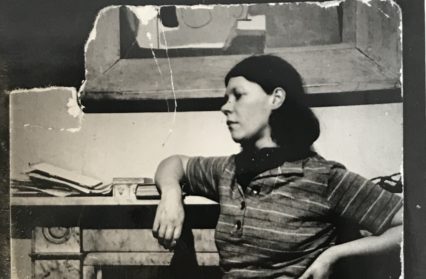Charlotte Thomas explores the life and work of an under-appreciated 20th century artist, Frances Richards, whose work spans a dizzying array of styles and subjects, and is the focus of a brilliant retrospective at Swansea’s Glynn Vivian Gallery.
Frances Richards, née Clayton, was born in Burslem, Stoke-on-Trent in 1901, into a working class family. At the age of 16 she began an apprenticeship as a painter and pottery designer at Paragon China, and attended the Burselm School of Art, which is where she began her artistic journey. The skills and fine line work that she learnt while working in the potteries would remain with her and influence her artworks throughout her life.
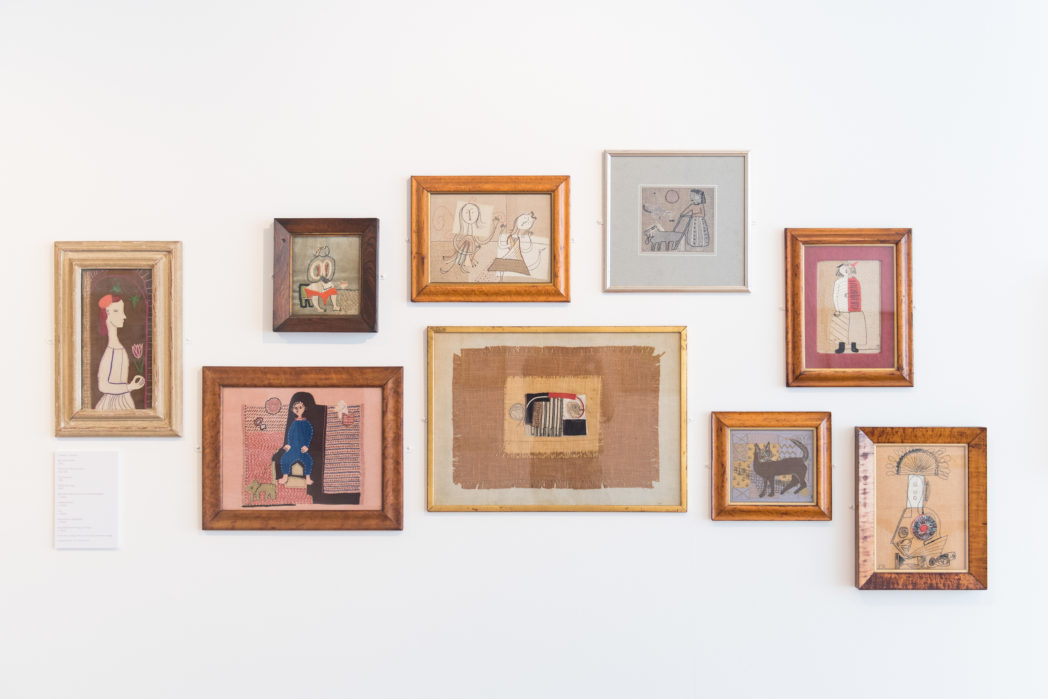
In 1926, Frances won a scholarship to study at the Royal College of Art in London. Here she met her future husband, the artist Ceri Richards (1903-1971). The pair were married in 1929. During her time at the college, Frances would frequent the South Kensington Museum (now known as the V&A), in order to create copies of the artworks and gain inspiration from the museum collection. The college and the museum were connected by a ‘secret’ staircase which could only be accessed by the students, providing them with a direct route into the museum. Between 1928-1939 Frances was Head of Design at Camberwell School of Art, and taught at Chelsea School of Art from 1947-1959.
Frances received her first professional commission in the early-1930s. She was commissioned by Stanley Morison to create a series of lithographs and line engravings inspired by The Twelve Acts of The Apostles.These early works are representative of her personal style of clean and delicate lines, derived from her education in the potteries. Frances was an unwaveringly independent artist and was never influenced by popular fashion.
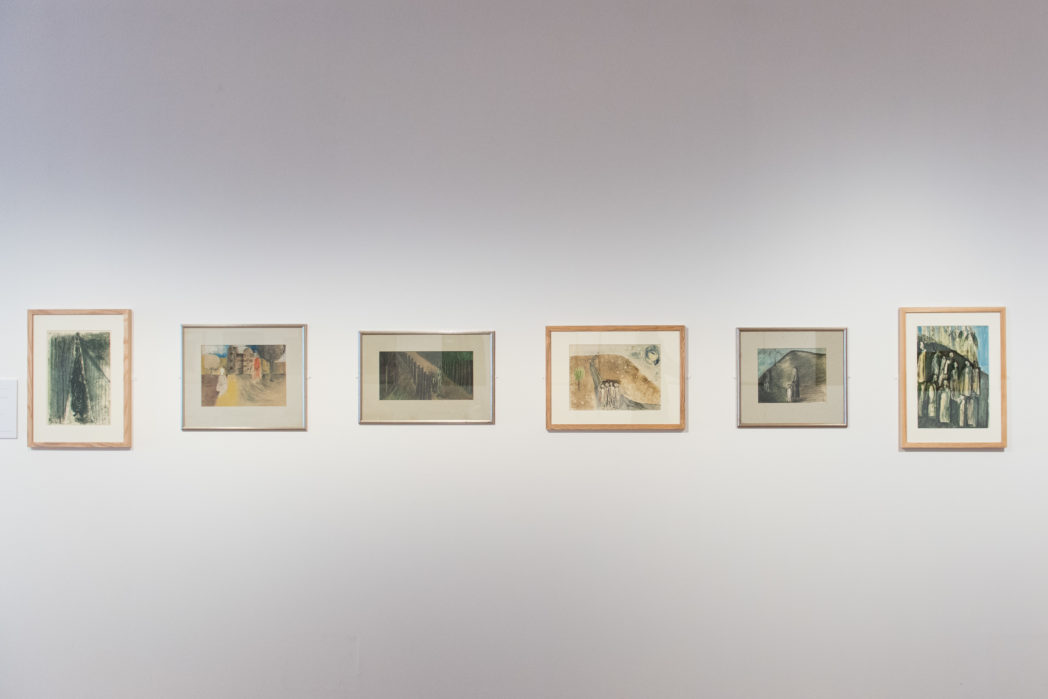
On the outbreak of the Second World War the family were still living in London, but were soon evacuated to Cardiff, where Ceri taught as Head of Painting at Cardiff School of Art. However, Frances did not relocate with her husband and daughter as she was still required to teach in London, and as a result was frequently separated from her family for extended periods of time. This was quite unusual for the period as it would have typically been the father who was separated from the family and not the mother.
Her wartime experience of separation, alongside the blitz, black-outs, civilian casualties and refugees are clearly captured in her work from this period. During her time in London, Frances witnessed the destruction and aftermath of the bombing, and also the influx of refugees and The Kindertransport into the country. She clearly felt the plight of these individuals and it had a profound effect on her and her work, as these poignant scenes dominate her work during the 1940s. It results in one of the most striking features of Frances’ works, which is this distinct feeling of solitude and loneliness, with many singular and lone figures appearing in her pieces. The majority of these subjects are women and children. Even in works which depict groups of subjects, there is still a distinct feeling of vulnerability and displacement. This derived from her own experiences and feelings throughout the war, and also from witnessing the plight of European refugees fleeing war torn cities and Nazi oppression and also The Kindertransport movement.
In the late-1940s she began to teach embroidery while working at Camberwell School of Art. Frances had no previous experience with embroidery, but over the course of a single weekend she taught herself all of the basic stitches. She was not an embroiderer in the traditional sense, she used the stiches as a form of line drawing and in her delicate and simplistic style created a series of beautiful and playful artworks. These works, made after the end of the war show a sense of relief, with a more extensive and vibrant colour palette than the war years, and a focus on childhood, toys and animals in a less harrowing setting. However, her female figures still appear as singular subjects, with a melancholy that echoes her wartime life.
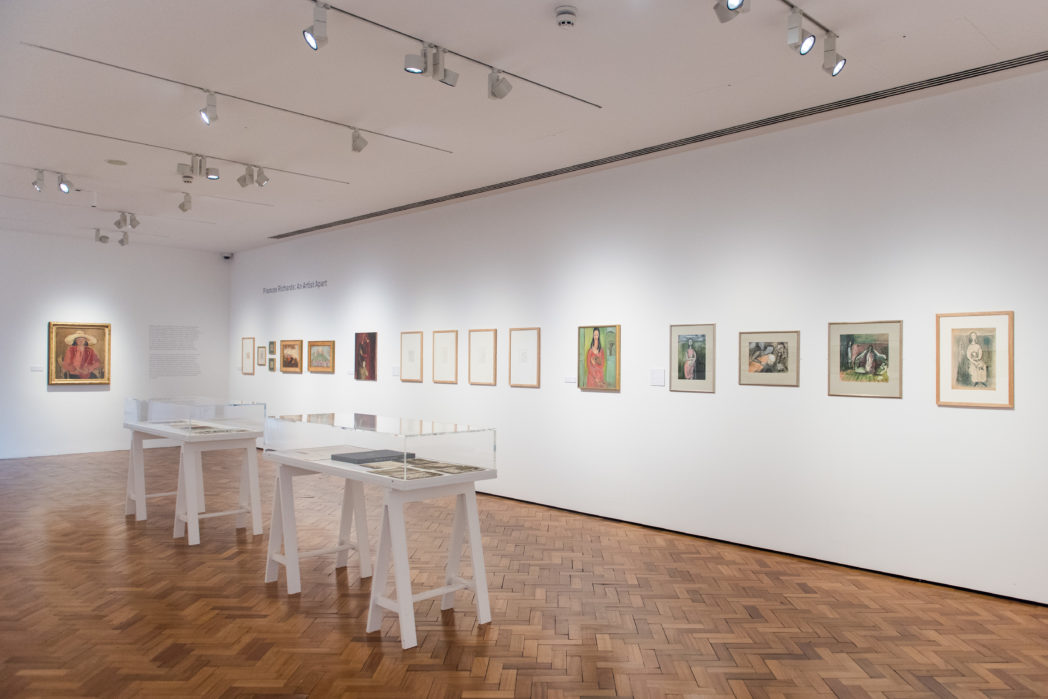
In her later years, her mood appears to have lifted and she began working with acrylic, and inspired by her garden and that of her neighbours began to create a series of striking flower paintings. Although these works appear happier and full of colour, on closer inspection there is a poignancy and loneliness amongst the flowers. They are often isolated and self-contained, cut from the main plant and left to survive and wither in a vase or a glass. Her thoughts and work are haunted by this feeling of loneliness.
Creating and making was an intrinsic part of Frances’ life, and she continued to produce work up until her death in 1985. Her last work, which is currently on display in the exhibition is a series of lithographs, The Road to Town, inspired by the poem by Virgil, and features an amusing group of singing swans.
Similarly to the experience of many female artists, Frances was and still is overshadowed by her famous husband, Ceri. Ceri had the prestige and the use of largescale studios and canvases, whereas Frances would work at the family’s kitchen table, on any pieces of paper, scrap or otherwise that she could find. This is especially prominent during the period of rationing during the 1940s and 1950s, and is the reason why several works in the Glynn Vivian exhibition were far too fragile to mount let alone frame, and as a result are displayed in cases instead. Regardless of this she was always very supportive of her husband.
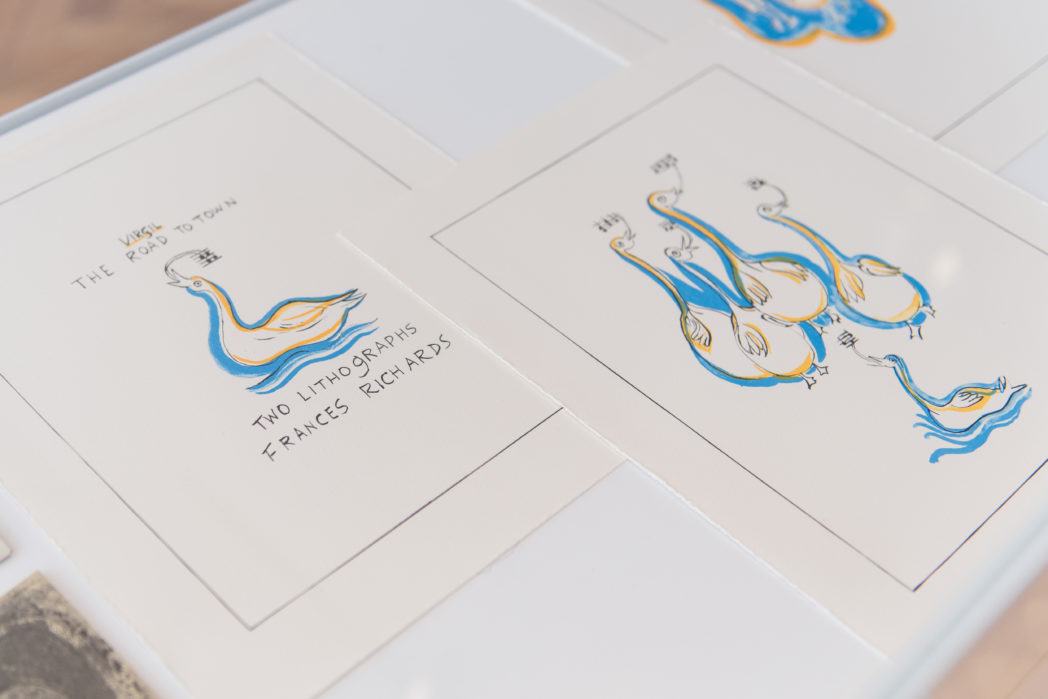
Despite being married for many years the couples artistic styles never influenced or interfered with one another. With the exception of the image of the Costerwomen, which appears in both of their works, their themes, subject and styles never crossed over.
Although largely overlooked until now, Frances has exhibited in various group and solo shows after the war, but these primarily celebrated her embroidery works. Many of the works in the Glynn Vivian exhibition, particularly her early work, have never been displayed before. Her work is held in various collections including Tate, V&A, Contemporary Art Society for Wales, Glynn Vivian Art Gallery and many private collections.
Frances Richards: An Artist Apart is curated by Mel and Rhiannon Gooding. Rhiannon is the daughter of Ceri and Frances and many of the works on display have come from private collections. The exhibition continues at Glynn Vivian until Sunday 24 November 2019.
Charlotte Thomas is an Exhibitions Assistant at Glynn Vivian Art Gallery.


